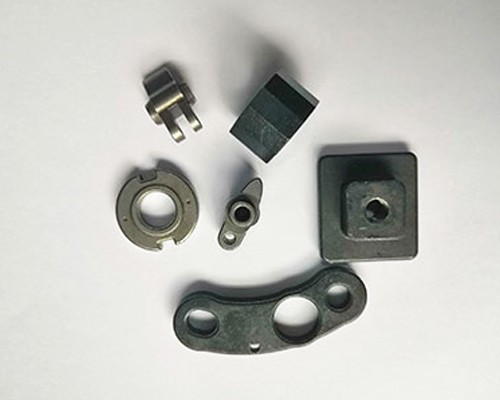Heat Treatment Process of Powder Metallurgy Metal
In the heat treatment of powder metallurgy materials, alloy elements such as nickel, molybdenum, manganese, chromium, and vanadium are usually added to improve quenching ability, which works in a similar manner to the mechanism in dense materials, can significantly refine grain size, and increase the stability of undercooled austenite when dissolved in it.
This ensures the transformation of austenite during quenching, increases surface hardness, and enhances quench depth of the material. In addition, powder metallurgy materials require tempering after quenching, and the temperature control during tempering has a great impact on the performance of the material. Thus, the tempering temperature should be determined according to different material characteristics to reduce the impact of tempering brittleness. Generally, materials can be tempered for 0.5-1.0 hours in air or oil at 175-250°C.

Chemical heat treatment generally includes three basic processes: decomposition, absorption, and diffusion.
For example, the reaction of carburizing heat treatment is:
2CO ≒ [C] + CO2 (exothermic reaction),
CH4 ≒ [C] + 2H2 (endothermic reaction).
When carbon is decomposed, it is absorbed by the metal surface and gradually diffused inward. Quenching and tempering are carried out after sufficient carbon concentration is obtained on the surface of the material, which increases the surface hardness and quench depth of powder metallurgy materials. Due to the existence of pores in powder metallurgy materials, activated carbon atoms penetrate from the surface into the interior to complete the chemical heat treatment process. However, the higher the material density, the weaker the pore effect, and the less obvious the effect of chemical heat treatment. Therefore, a reducing atmosphere with a high carbon potential should be used for protection. According to the pore characteristics of powder metallurgy materials, the heating and cooling rate should be lower than that of dense materials during heat treatment. Therefore, the holding time should be extended and the heating temperature should be increased.
The chemical heat treatment of powder metallurgy materials includes several forms such as carburizing, nitriding, sulfuration, and multi-element co-diffusion. The quench depth is mainly related to the material density in chemical heat treatment. Therefore, corresponding measures can be taken in the heat treatment process. For example, when carburizing, the time can be appropriately extended when the material density is greater than 7 g/cm3. Chemical heat treatment can improve the wear resistance of materials. The uneven austenitic carburizing process of powder metallurgy materials can make the carbon content on the surface of the treated material layer reach more than 2%, and carbides are uniformly distributed on the surface of the carburized layer, which can improve the hardness and wear resistance of the material.
Copyright © Harber Industrial Limited All Rights Reserved. | mechanical gear ring | mim parts | powder metallurgy gears | China MIM | Sitemap

IPv6 network supported
 Send A Message
Send A MessageIf you are interested in our products and want to know more details,please leave a message here,we will reply you as soon as we can.